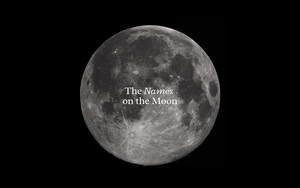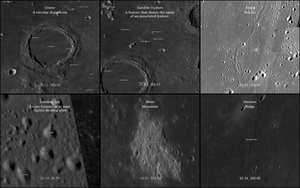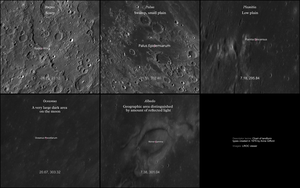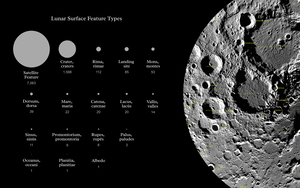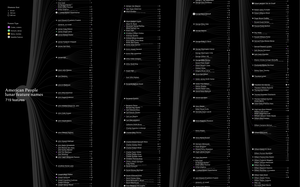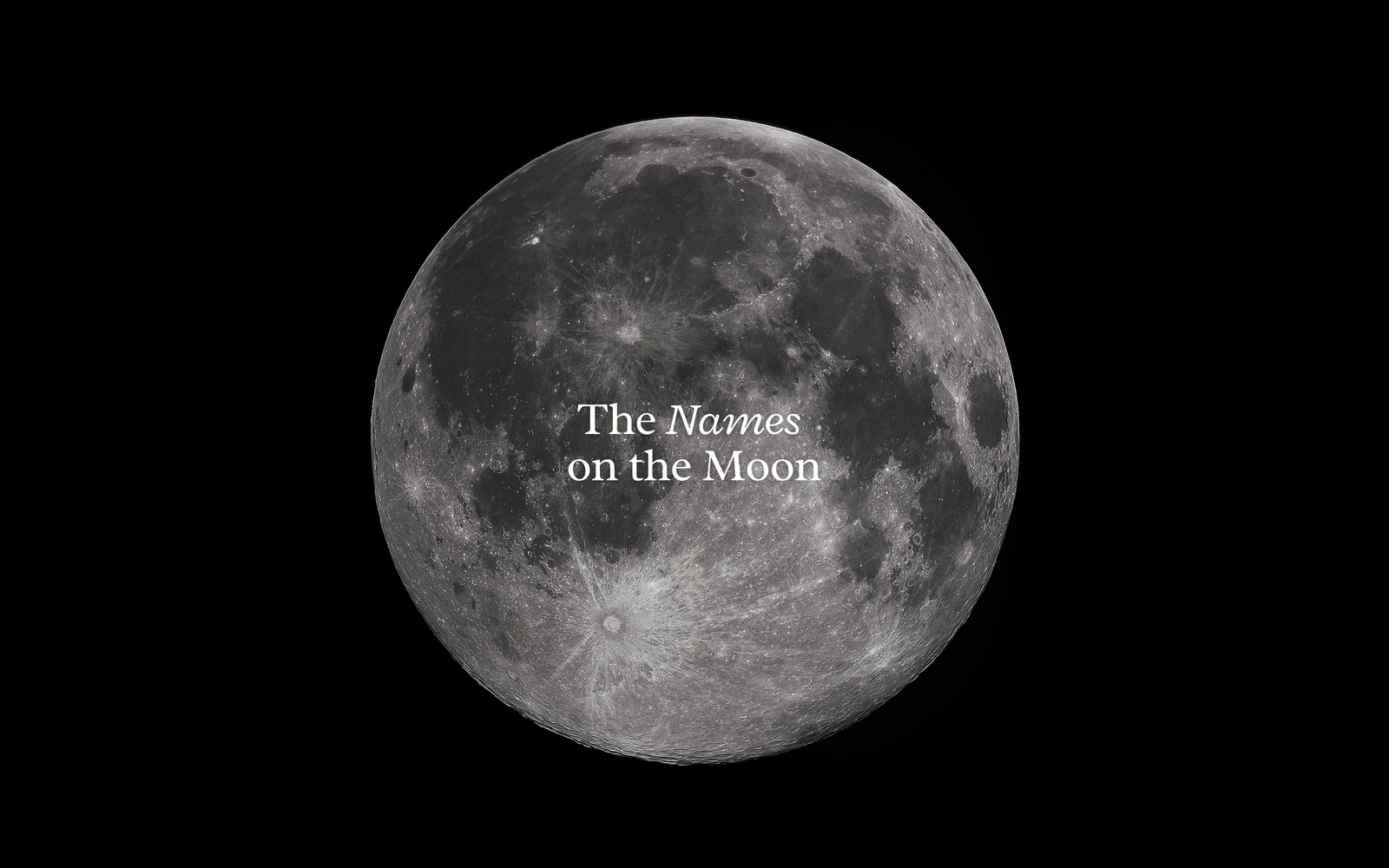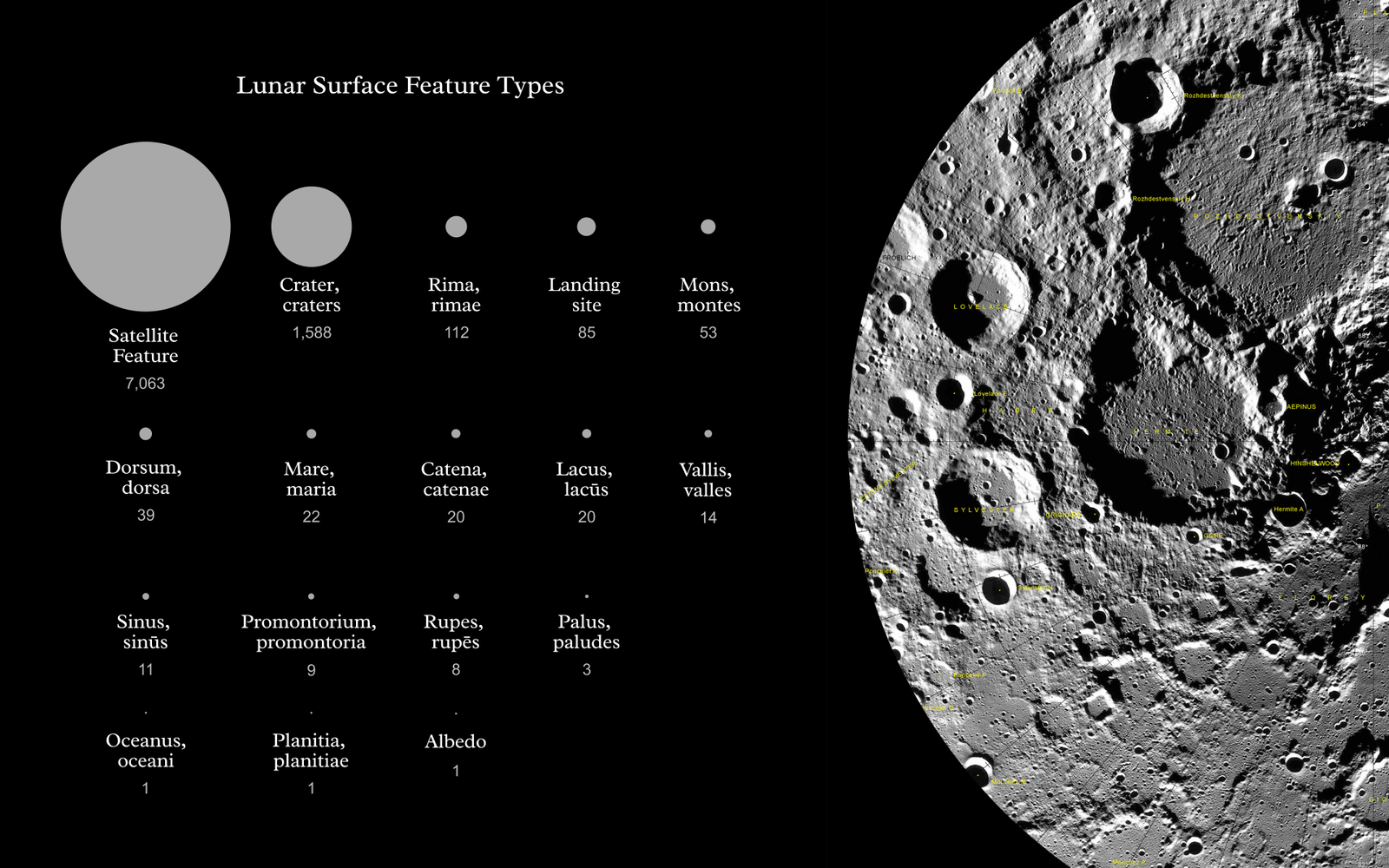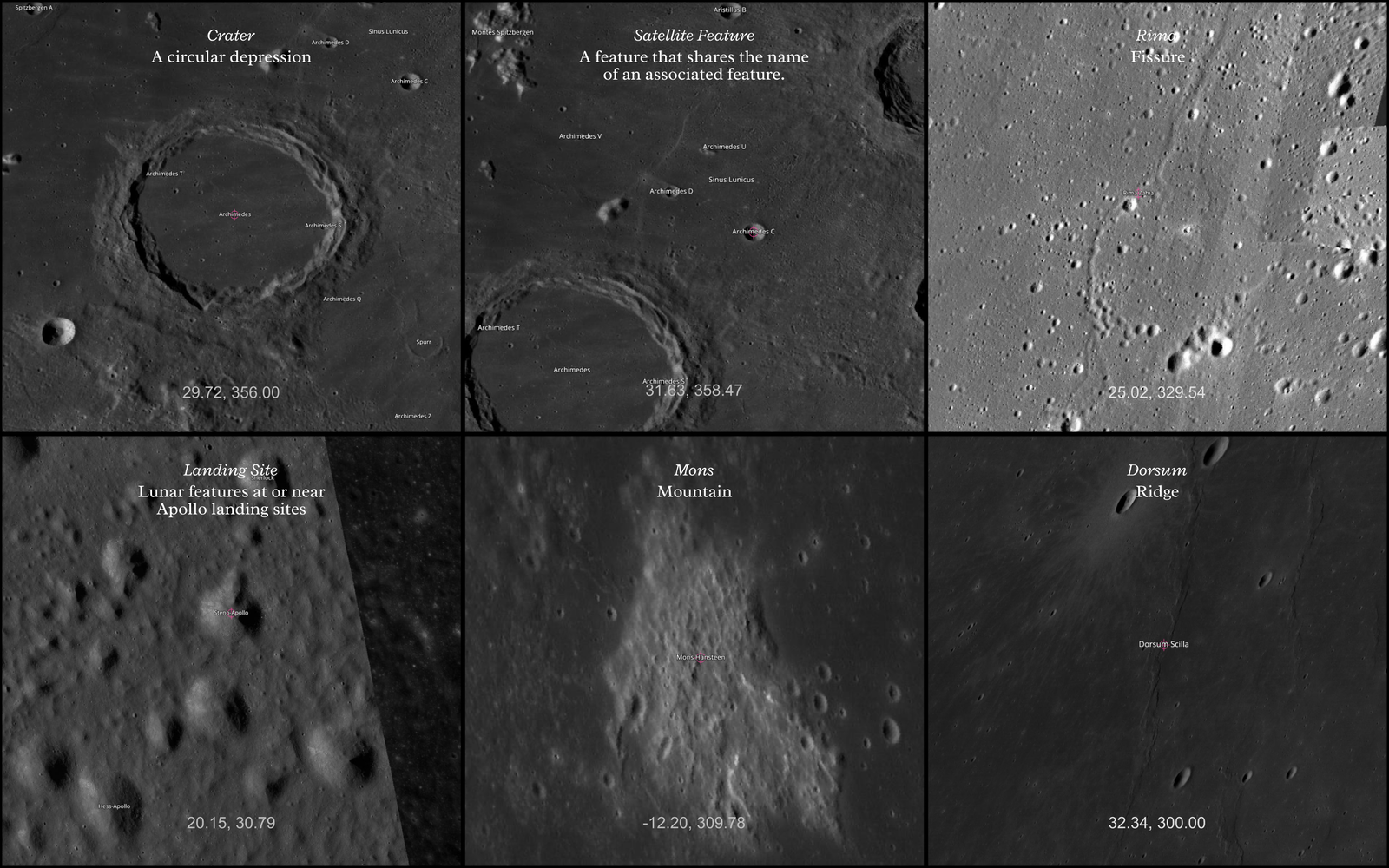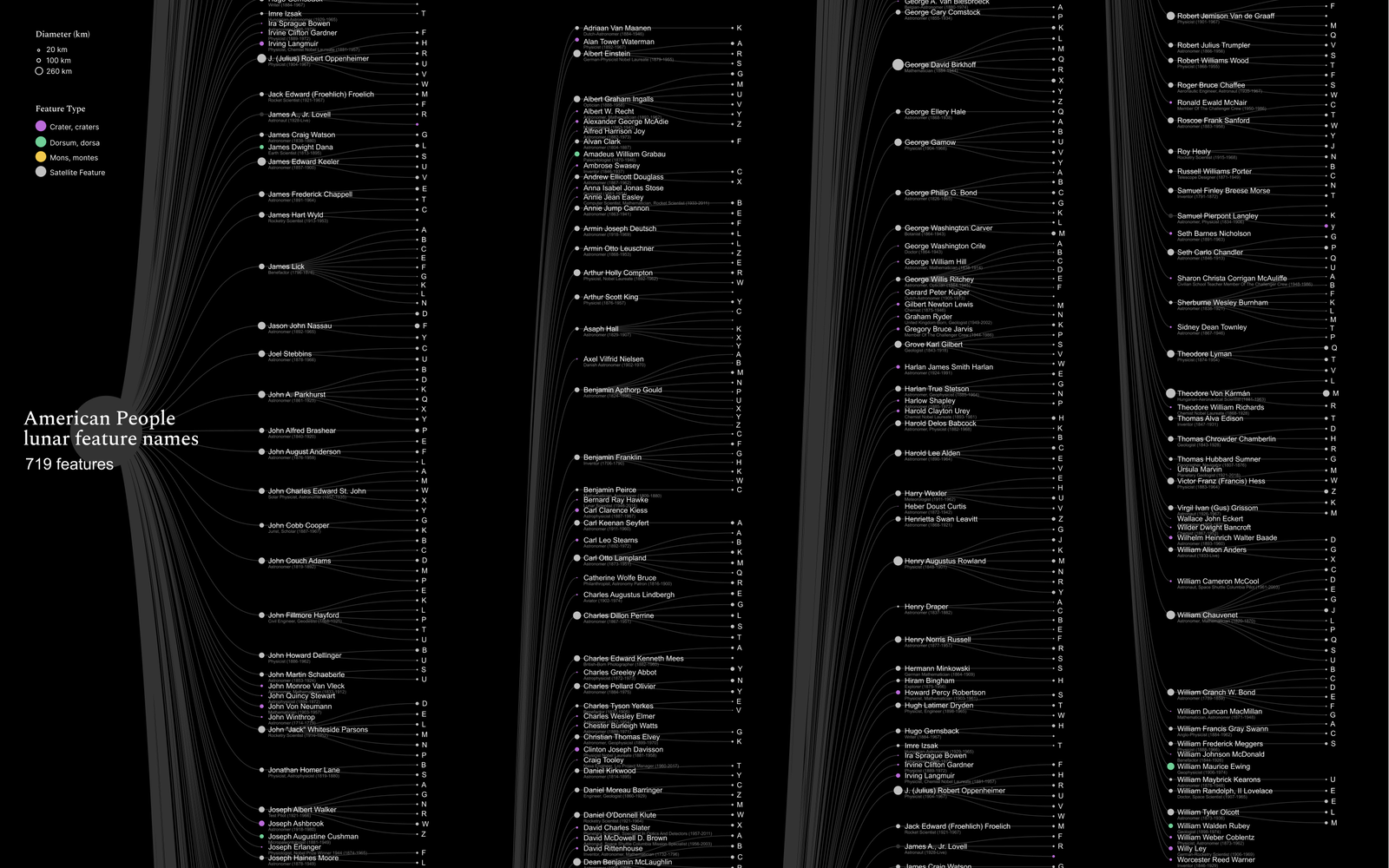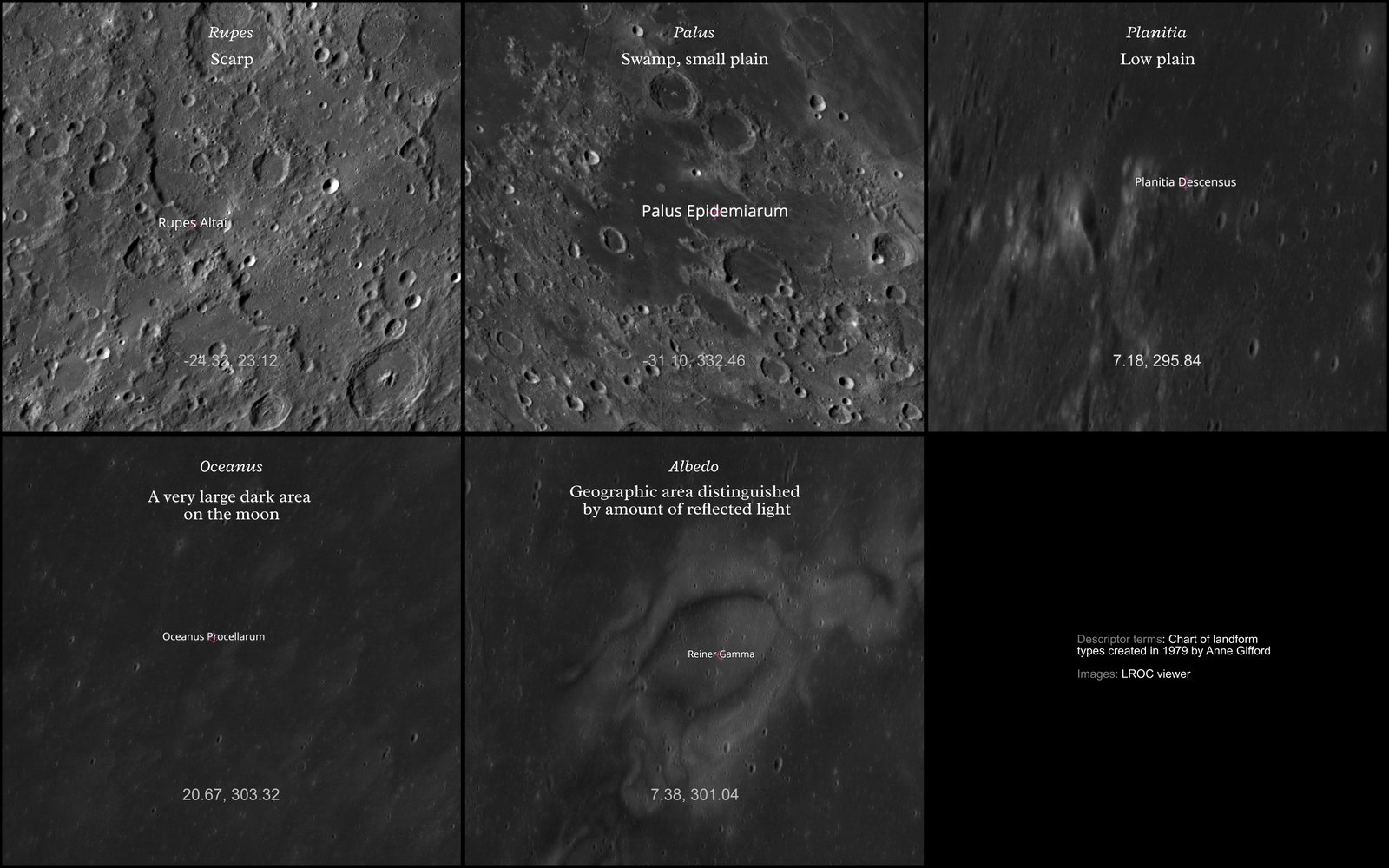How do we visualize the Moon’s surface beyond what we see in photos? Despite centuries of observation, many subtle features remain elusive to the naked eye.
This project offers a new lens: a detailed visualization of the Moon’s surface topography.
Developed with lunar scientists and space enthusiasts, this project transforms elevation and crater data into an interactive 3D map of the Moon. Each feature is represented by color, height, and shading, revealing subtle geological structures invisible in traditional imagery.
The underlying data combines satellite measurements, laser altimetry, and high-resolution photographic surveys. Using advanced GIS and 3D modeling tools, the Moon’s surface was divided into a grid, each cell representing elevation, crater depth, and regolith composition.
Beyond data, 3D modeling in Blender brought the Moon to life. Elevation and surface textures were transformed into a visually immersive experience, while spheres highlight key craters and topographic anomalies.
A final layer of artistry refined colors and contrasts, creating a dramatic yet scientifically faithful representation suitable for both exploration and presentation.
This project is more than a map — it’s a journey across lunar landscapes, helping us understand the Moon’s terrain and fostering appreciation for celestial exploration.
Explore the Moon project and witness how data visualization can reveal hidden details of our nearest celestial neighbor — crater by crater.
